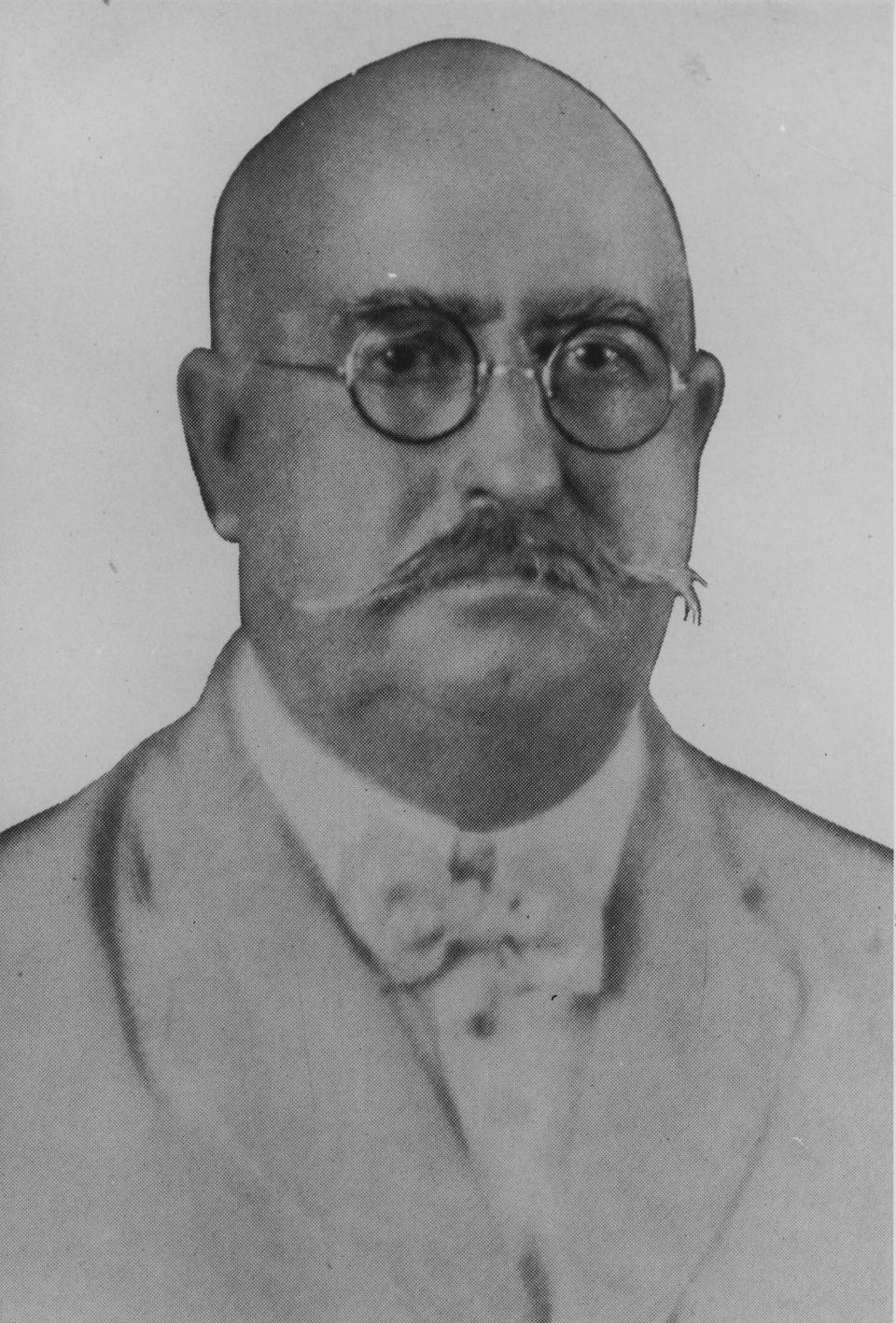Why is former Arizona Gov. George W.P. Hunt's tomb so special?
- Oops!Something went wrong.Please try again later.
The white pyramid that sits on a hill in Papago Park overlooking Phoenix and the Phoenix Zoo is the mausoleum where Arizona’s first governor and his family are entombed. Governor George W.P. Hunt served a total of seven terms as Arizona’s governor, not all consecutively, starting in 1912 when Arizona was granted statehood.
When Gov. Hunt’s wife, Helen Duett Ellison Hunt, died in 1931, Hunt had Del E. Webb Construction Co. build the pyramid in her honor. Completed in 1932, the tomb was not far from the family’s home on East McDowell Road. Hunt chose the pyramid design because he had been impressed by the Egyptian pyramids during his travels with his wife.
In addition to the governor and his wife, family members also entombed in the pyramid include their only child, Virginia, and her second husband, William E. Frund; Mrs. Hunt’s parents, Jessie and Susan Ellison, and the Ellison’s other daughter, Lena Ellison.
In 2009, the Governor George W.P. Hunt Chapter of the Daughters of the American Revolution (DAR), undertook a major renovation of the pyramid, under the able leadership of Helen Bernhard of Phoenix. When DAR members went to the tomb to dedicate a plaque to Hunt’s great-great grandfather, who had been a Revolutionary War soldier, they noticed that the pyramid was in very bad shape. So they took it upon themselves to get the proper permission and raise the funds to put it back in good shape.

Along with Bernhard and the DAR, Gary Banker, owner of Banker Insulation Company in Phoenix, adopted the project as his mission. These two dedicated volunteers invited Messinger Mortuaries to be involved, since licensed funeral directors had to be present when the tomb was opened. Bill Gumbert and I were honored to participate.
The first thing our little team had to do was explain the proposed project to Gov. Hunt’s successors and secure their permission. Gary generously flew the four of us over to Escondido, Calif., to meet the governor’s grandson, Hunt Brannen, and his wife. They shared some interesting stories with us and granted the needed authority for the work.
Cost of the project was $76,000. The DAR had two quilt and ornament sales, raising about $8,000 for benches and displays. The Phoenix Parks Department contributed $35,000 from the Parks and Preserves Initiative, thanks to Helen’s urging. Gary chipped in the rest, with his company doing the actual reconstruction work.
The exterior, which was chipped and cracked, was replaced. The top of the pyramid was gone, so that was replaced. The interior of the tomb was cleaned, casket shelves improved, and the exterior door and other elements either repaired or replaced. The iron fencing around the outside was redone, along with new desert landscape. Both new and former plaques honoring the Hunts were reinstalled.
George W.P. Hunt: Arizona's first governor served 7 terms. Here's why
Bill and I were present whenever the tomb was opened and work was done within the pyramid. Every step of the project was undertaken with great respect and care.
The public got its first access to the educational components of the renovated tomb in April 2009. The Gov. George W.P. Hunt Chapter of the DAR and Gary Banker deserve tremendous credit for taking on this task and for the high degree of integrity they maintained throughout the effort.
Reared on a local dairy farm, former Scottsdale city councilman (1971-76), state legislator (1979-85) and honored oral historian Paul Messinger founded Messinger Mortuaries in 1959. He can be reached at 480-860-2300 or 480-945-9521.
This article originally appeared on Arizona Republic: Paul Messinger: Why is former Gov. George W.P. Hunt's tomb so special?
